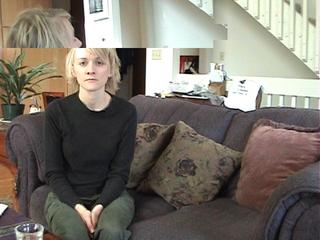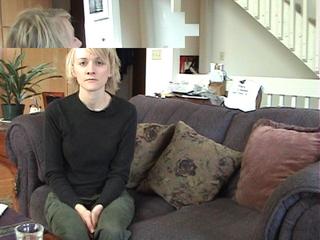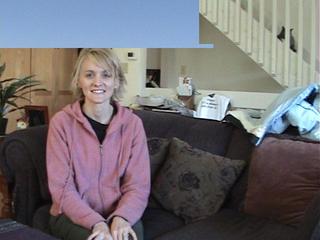





So I embarked onto an exhaustive investigation of the data, and I hope my info contributes at least one data point about DV reliability (i.e. "losslessness"). The results are quite surprizing!
As I understand, MiniDV uses ECC to try to correct some errors completely and that it also uses "error concealment" to "fix" errors that the ECC cannot correct. What has not been clear, even from Internet searches, is how often these errors, especially the uncorrectable ones, occur. By "uncorrectable", I mean errors that will be seen as differences in the bits captured, even if the camera tried to conceal them.
It started when my wife had to get a new inexpensive camera. Our old TRV900 was starting to show audio (and some video) dropouts consistently (i.e. every few seconds). Cleaning didn't help, and I didn't want to spend more money and time getting that camera looked at, etc. We needed a camera now to be able to produce videos reliably (and also capture our old tapes). We have about 20 old MiniDV tapes, and I figured I'd capture these digitally to hard disk for archival purposes (not trusting tapes much at this point).
Anyway, I knew that many of the dropouts on recently recorded tapes were there from the recording phase using that bad camera (but it was hard to tell if it was recording or playback that was the problem), so I expected them on capture with the new camera, but one particular tape had new recordings made on this brand-new camcorder as well. I did a couple of captures over FireWire of this tape, and for kicks, I decided to do a bit-for-bit compare of the two captures. Mind you, this is a brand new camcorder (although inexpensive: Sony DCR-HC26) with a very new tape. In the image section below, you'll see that there may be evidence that the tape was recorded over once or maybe twice at most during the recording session. I was not there, so I do not know exactly.
I started by comparing the AVI files using "cmp" in Linux (the AVIs are "Type 1" captured using WinDV). Noting that the sizes of the AVIs were exactly the same (number of bytes), I figured I had a shot at exact data without frames dropped (WinDV always seems to report exactly 1 dropped frame). But I also knew that the AVI format might have slight differences in header data or whatever, making comparing AVIs an invalid process. As expected, the files had some byte differences.
So I went further. I used a free Ulead tool to convert both captures to Type 2, and I used "mplayer" (Linux) to convert videos into individual frame images and audio wav files. I then logged all differences. There were some clips made with the old camera and 9 clips made with the new camera. One new clip had audio differences, but the other 8 did not.
As expected, the old recordings had bit differences in audio and frames. More unexpectedly, the new clips also had differences, but fewer. The new recordings matched better, with only 4 out of the 9 clips showing any bit differences. One new clip had audio differences, but the other 8 did not. We are talking only a few frames out of thousands, of course.
So I delved into the differences between the frames, and many were completely invisible to the eye without really looking. I used a Linux/ImageMagick tool called "compare" to create difference images to point out the areas in the image where there were numeric pixel mismatches. One case showed differences in horizontal bands as well. But quite often there was no obvious glitch to the naked eye. I had to stare at the right place in the two images to see the difference, looking back and forth between them. In some image areas, I could detect no difference at all, and I gave up looking. I think this is a case of the camera concealing errors rather than correcting them and doing a pretty good job in many cases. Of course, some images had visible differences (like shifted sections), sometimes happening at the start of the clip.
2) Many (most?) uncorrectable errors are invisible. So the claim made in one Usenet thread I read that "I did not see glitches, so the copy is bit-perfect" is not a good claim. In other words, "concealed" errors could very well go unnoticed but still cause bit differences/loss over generations.
3) Since there were a relatively small number of frames with differences in literally thousands of frames captured, the error rate is not large at all. Also, the errors seemed to come in batches of almost consecutive frames, so there could have been weak spots on the tape. Still, the captures are clearly not bit-perfect by any means!
Now maybe I have a bad camera (actually two: my old one that got bad at some point, and a new one that is bad out of the box), but I am assuming for now that this is the nature of MiniDV. On the new recordings, I never *noticed* any dropouts at all, but the bit comparrison showed a few mismatches here and there. Most of the tape was probably copied bit-perfectly, but obviously not all of it. In fact, there were enough differences to make me call this "generational loss". It might go many generations before the loss becomes obvious, but it's still there.
| Clip | Total frames | Differing frames | Audio difference |
|---|---|---|---|
| 1 | 4822 | 1, 336 | None |
| 2 | 6030 | 1, 407, 408, 5369 | None |
| 3 | 392 | None | None |
| 4 | 4626 | None | None |
| 5 | 321 | None | None |
| 6 | 3170 | None | None |
| 7 | 3528 | None | None |
| 8 | 4214 | 1 | None |
| 9 | 4570 | 2486, 2487, 2495, 2502, 2503 | Small silent gaps in 2nd capture |
Big caveat: Please note that I captured the frames to JPEG images. What this means is that any pixel differences in the video frames would likely affect all pixels in each affected 8x8 square in the images here. This means any artifacting you see around the differences might be augmented by the JPEG process. Just keep this in mind. Also, the difference images would likely show whole 8x8 blocks in red, hiding the actual scope of the pixel differences within those blocks. So even though the blocks resemble the DCT 8x8 blocks from the MiniDV compression, they should not be interpreted this way here. Still, the areas of red will indicate the area in which the pixel errors exist.
 |
 |
 |
| This is the first frame in this clip and the only one with differences. This is similar to the first frame in the above clips, except the top left is a solid color. | ||